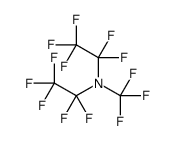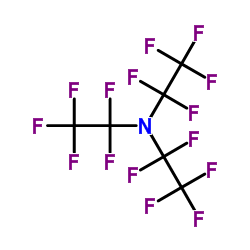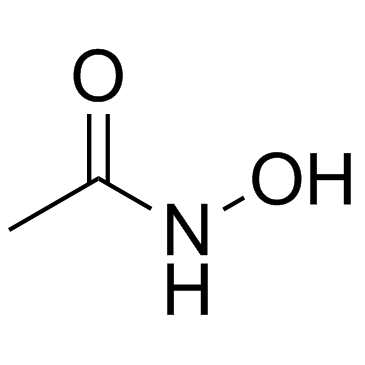100-37-8
| 中文名 | 二乙氨基乙醇 |
|---|---|
| 英文名 | 2-diethylaminoethanol |
| 中文别名 |
N,N-二乙基乙醇胺
二乙基乙醇胺 |
| 英文别名 |
N,N-Diethylethanolamine
Diethylaminoethanol 2-(Diethylamino)ethanol 2-Diethylaminoethanol EINECS 202-845-2 MFCD00002850 2-Hydroxytriethylamine Ethanol, 2-(diethylamino)- |
| 密度 | 0.9±0.1 g/cm3 |
|---|---|
| 沸点 | 164.8±13.0 °C at 760 mmHg |
| 熔点 | -70 °C |
| 分子式 | C6H15NO |
| 分子量 | 117.189 |
| 闪点 | 48.9±0.0 °C |
| 精确质量 | 117.115364 |
| PSA | 23.47000 |
| LogP | 0.74 |
| 外观性状 | 透明至淡黄色液体 |
| 蒸汽密度 | 4.04 (vs air) |
| 蒸汽压 | 0.7±0.7 mmHg at 25°C |
| 折射率 | 1.443 |
| 储存条件 | 储存注意事项储存于阴凉、通风的库房。库温不宜超过37℃。远离火种、热源。保持容器密封。应与氧化剂、酸类、食用化学品分开存放,切忌混储。采用防爆型照明、通风设施。禁止使用易产生火花的机械设备和工具。储区应备有泄漏应急处理设备和合适的收容材料。 |
| 稳定性 | 1.化学性质:具有叔胺和醇的化学反应性。用过氧化氢、高锰酸钾等氧化时,生成乙醇、乙酸、乙酰氧肟酸、氨、乙二醛和草酸等。用四乙酸铅氧化时,生成二乙胺与乙二醇醛。用硫代硫酸钾室温氧化生成乙醛。并可形成盐酸盐C6H15NO·HCl(熔点135~136℃),苦味酸盐[C6H15NO·C6H3N3O7(熔点79℃)]。 2.稳定性 稳定 3.禁配物 强氧化剂、强酸 4.聚合危害 不聚合 |
| 水溶解性 | soluble |
| 凝固点 | -70℃ |
| 分子结构 | 1、摩尔折射率:35.10 2、摩尔体积(cm3/mol):132.3 3、等张比容(90.2K):313.2 4、表面张力(dyne/cm):31.4 5、极化率:13.91 |
| 计算化学 | 1.疏水参数计算参考值(XlogP):0.3 2.氢键供体数量:1 3.氢键受体数量:2 4.可旋转化学键数量:4 5.互变异构体数量:无 6.拓扑分子极性表面积23.5 7.重原子数量:8 8.表面电荷:0 9.复杂度:43.8 10.同位素原子数量:0 11.确定原子立构中心数量:0 12.不确定原子立构中心数量:0 13.确定化学键立构中心数量:0 14.不确定化学键立构中心数量:0 15.共价键单元数量:1 |
| 更多 | 1.性状:无色吸湿性液体,有氨味。 2.熔点(℃):-70 3.沸点(℃):163 4.相对密度(水=1):0.88 5.相对蒸气密度(空气=1):4.03 6.饱和蒸气压(kPa):2.8(20℃) 7.辛醇/水分配系数:0.31 8.闪点(℃):52(CC);60(OC) 9.引燃温度(℃):320 10.爆炸上限(%):11.7 11.爆炸下限(%):6.7 12.溶解性:与水混溶,溶于乙醇、乙醚、苯、丙酮等多数有机溶剂。 13.折射率(20ºC):1.4412 14.黏度(mPa·s,20ºC):3.5 15.黏度(mPa·s,25ºC):4.05 16.黏度(mPa·s,60ºC):1.50 17.蒸气压(kPa,55ºC):1.33 18.蒸气压(kPa,100ºC):10.67 19.燃烧热(KJ/mol):4198.1 20.生成热(KJ/mol):309.8 |
Synonym:2-Diethylaminoethanol, Beta-Diethylaminoethano Section 2 - COMPOSITION, INFORMATION ON INGREDIENTS
Risk Phrases: 10 36/37/38 Section 3 - HAZARDS IDENTIFICATION EMERGENCY OVERVIEW
Flammable. Irritating to eyes, respiratory system and skin.Hygroscopic. Potential Health Effects Eye: May cause eye irritation. May cause eye injury. Skin: May cause severe skin irritation. May be harmful if absorbed through the skin. Ingestion: May cause irritation of the digestive tract. May be harmful if swallowed. Inhalation: Vapors may cause dizziness or suffocation. May cause nausea and possible vomiting. Chronic: None Section 4 - FIRST AID MEASURES Eyes: Flush eyes with plenty of water for at least 15 minutes, occasionally lifting the upper and lower eyelids. Get medical aid immediately. Skin: Get medical aid immediately. Flush skin with plenty of soap and water for at least 15 minutes while removing contaminated clothing and shoes. Wash clothing before reuse. Ingestion: If victim is conscious and alert, give 2-4 cupfuls of milk or water. Never give anything by mouth to an unconscious person. Get medical aid immediately. Inhalation: Get medical aid immediately. Remove from exposure to fresh air immediately. If not breathing, give artificial respiration. If breathing is difficult, give oxygen. Notes to Physician: Antidote: None reported. Section 5 - FIRE FIGHTING MEASURES General Information: As in any fire, wear a self-contained breathing apparatus in pressure-demand, MSHA/NIOSH (approved or equivalent), and full protective gear. Vapors may form an explosive mixture with air. Vapors can travel to a source of ignition and flash back. Use water spray to keep fire-exposed containers cool. Containers may explode in the heat of a fire. Flammable liquid and vapor. Vapors may be heavier than air. They can spread along the ground and collect in low or confined areas. Extinguishing Media: For small fires, use dry chemical, carbon dioxide, water spray or alcohol-resistant foam. Do NOT get water inside containers. For large fires, use water spray, fog or alcohol-resistant foam. Cool containers with flooding quantities of water until well after fire is out. Section 6 - ACCIDENTAL RELEASE MEASURES General Information: Use proper personal protective equipment as indicated in Section 8. Spills/Leaks: Absorb spill with inert material (e.g. vermiculite, sand or earth), then place in suitable container. Avoid runoff into storm sewers and ditches which lead to waterways. Use water spray to disperse the gas/vapor. Remove all sources of ignition. Use a spark-proof tool. Provide ventilation. Section 7 - HANDLING and STORAGE Handling: Wash thoroughly after handling. Use only in a well-ventilated area. Avoid contact with eyes, skin, and clothing. Empty containers retain product residue, (liquid and/or vapor), and can be dangerous. Keep container tightly closed. Avoid contact with heat, sparks and flame. Avoid ingestion and inhalation. Do not pressurize, cut, weld, braze, solder, drill, grind, or expose empty containers to heat, sparks or open flames. Storage: Keep away from heat, sparks, and flame. Store in a tightly closed container. Store in a cool, dry, well-ventilated area away from incompatible substances. Flammables-area. Store protected from moisture. Section 8 - EXPOSURE CONTROLS, PERSONAL PROTECTION Engineering Controls: Use adequate ventilation to keep airborne concentrations low. Personal Protective Equipment Eyes: Wear appropriate protective eyeglasses or chemical safety goggles as described by OSHA's eye and face protection regulations in 29 CFR 1910.133 or European Standard EN166. Skin: Wear appropriate protective gloves to prevent skin exposure. Clothing: Wear appropriate protective clothing to prevent skin exposure. Respirators: Follow the OSHA respirator regulations found in 29CFR 1910.134 or European Standard EN 149. Always use a NIOSH or European Standard EN 149 approved respirator when necessary. Section 9 - PHYSICAL AND CHEMICAL PROPERTIES Physical State: Liquid Appearance: clear yellow brown Odor: unpleasant odor pH: Not available. Vapor Pressure: 1.9 mbar @ 20 C Viscosity: 5mPa @ 20C Boiling Point: 161 deg C @ 760.00mm Hg Freezing/Melting Point: -70 deg C Autoignition Temperature: 260 deg C ( 500.00 deg F) Flash Point: 60 deg C ( 140.00 deg F) Explosion Limits, lower: 6.70 vol % Explosion Limits, upper: 11.7 vol % Decomposition Temperature: Solubility in water: soluble Specific Gravity/Density: .8840g/cm3 Molecular Formula: C6H15NO Molecular Weight: 117.19 Section 10 - STABILITY AND REACTIVITY Chemical Stability: Stable under normal temperatures and pressures. Conditions to Avoid: Incompatible materials, ignition sources, excess heat, strong oxidants, exposure to moist air or water. Incompatibilities with Other Materials: Moisture. Hazardous Decomposition Products: Nitrogen oxides, carbon monoxide, irritating and toxic fumes and gases, carbon dioxide, nitrogen. Hazardous Polymerization: Has not been reported. Section 11 - TOXICOLOGICAL INFORMATION RTECS#: CAS# 100-37-8: KK5075000 LD50/LC50: CAS# 100-37-8: Dermal, guinea pig: LD50 = 1 mL/kg; Draize test, rabbit, eye: 5 mg Severe; Inhalation, mouse: LC50 = 5000 mg/m3; Oral, rat: LD50 = 1300 mg/kg; Skin, rabbit: LD50 = 1260 uL/kg. Carcinogenicity: N,N-Diethylethanolamine - Not listed by ACGIH, IARC, NIOSH, NTP, or OSHA. See actual entry in RTECS for complete information. Section 12 - ECOLOGICAL INFORMATION Ecotoxicity: Fish: Fathead Minnow: 1780 mg/L; 96 Hr.; Flow-through Section 13 - DISPOSAL CONSIDERATIONS Dispose of in a manner consistent with federal, state, and local regulations. Section 14 - TRANSPORT INFORMATION IATA Shipping Name: 2-DIETHYLAMINOETHANOL Hazard Class: 8 UN Number: 2686 Packing Group: II IMO Shipping Name: DIETHYLAMINOETHANOL Hazard Class: 3.3 UN Number: 2686 Packing Group: III RID/ADR Shipping Name: DIETHYLAMINOETHANOL Dangerous Goods Code: 3(31C) UN Number: 2686 Section 15 - REGULATORY INFORMATION European/International Regulations European Labeling in Accordance with EC Directives Hazard Symbols: XI Risk Phrases: R 10 Flammable. R 36/37/38 Irritating to eyes, respiratory system and skin. Safety Phrases: S 28A After contact with skin, wash immediately with plenty of water. WGK (Water Danger/Protection) CAS# 100-37-8: 1 United Kingdom Occupational Exposure Limits CAS# 100-37-8: OES-United Kingdom, TWA 10 ppm TWA; 49 mg/m3 TWA Canada CAS# 100-37-8 is listed on Canada's DSL List. CAS# 100-37-8 is listed on Canada's Ingredient Disclosure List. Exposure Limits CAS# 100-37-8: OEL-AUSTRALIA:TWA 10 ppm (50 mg/m3);Skin OEL-AUSTRIA:TWA 10 ppm (50 mg/m3);Skin OEL-BELGIUM:TWA 10 ppm (48 mg/m3);Skin OEL-DENMARK:TWA 10 ppm (50 mg/m3);Skin OEL-FINLAND:STEL 10 ppm (50 mg/m3);Skin OEL-FRANCE:TWA 10 ppm (50 mg/m3);Skin OEL-GERMANY:TWA 10 ppm (50 mg/m3);Skin OEL-THE NETHERLANDS:TWA 10 ppm (50 mg/m3);Skin OEL-THE PHILIPPINES:TWA 10 ppm (50 mg/m3);Skin OEL-RUSSIA:STEL 5 mg/m3;Skin OEL-SWITZERLAND:TWA 10 ppm (50 mg/m3);Skin OEL-UNITED KINGDOM:TWA 10 ppm (50 mg/m3);Skin OEL IN BULGARIA, COLOMBIA, JORDAN, KOREA check ACGIH TLV OEL IN NEW ZEALAND, SINGAPORE, VIETNAM check ACGI TLV US FEDERAL TSCA CAS# 100-37-8 is listed on the TSCA inventory. SECTION 16 - ADDITIONAL INFORMATION N/A |
|
毒理学数据: 1.急性毒性 LD50:1300mg/kg(大鼠经口);1260mg/kg(兔经皮) 2.刺激性 家兔经皮:500mg,轻度刺激(开放性刺激试验)。 家兔经眼:5mg,重度刺激。 生态学数据: 1.生态毒性 LC50:1780mg/L(96h)(黑头呆鱼);>1000mg/L(96h)(青鳉) 2.生物降解性 暂无资料 3.非生物降解性 暂无资料 4.其他有害作用 该物质对环境可能有危害,对水体应给予特别注意。 CHEMICAL IDENTIFICATION
HEALTH HAZARD DATAACUTE TOXICITY DATA
|
| 符号 |



GHS02, GHS05, GHS06 |
|---|---|
| 信号词 | Danger |
| 危害声明 | H226-H302-H311 + H331-H314 |
| 警示性声明 | P210-P280-P303 + P361 + P353-P304 + P340 + P310-P305 + P351 + P338-P370 + P378 |
| 个人防护装备 | Faceshields;full-face respirator (US);Gloves;Goggles;multi-purpose combination respirator cartridge (US);type ABEK (EN14387) respirator filter |
| 危害码 (欧洲) | C:Corrosive |
| 风险声明 (欧洲) | R10;R20/21/22;R34 |
| 安全声明 (欧洲) | S25-S26-S36/37/39-S45 |
| 危险品运输编码 | UN 2686 8/PG 2 |
| WGK德国 | 1 |
| RTECS号 | KK5075000 |
| 包装等级 | II |
| 危险类别 | 8 |
| 海关编码 | 2922192210 |
| 上游产品 10 | |
|---|---|
| 下游产品 9 | |
| 海关编码 | 2922192210 |
|---|---|
| 中文概述 | 2922192210 2-二乙氨基乙醇〔或称N,N-二乙基乙醇胺〕。监管条件:3(两用物项和技术出口许可证)。增值税率:17.0%。退税率:9.0%。最低关税:6.5%。普通关税:30.0% |
| 申报要素 | 品名, 成分含量, 用途, 乙醇胺及其盐应报明色度, 乙醇胺及其盐应报明包装 |
| 监管条件 | 3.两用物项和技术出口许可证 |
| Summary | 2922192210 2-(diethylamino)ethanol。supervision conditions:3(export license for dual-use item and technologies)。VAT:17.0%。tax rebate rate:9.0%。MFN tarrif:6.5%。general tariff:30.0% |
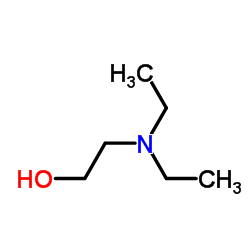

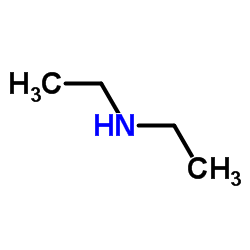

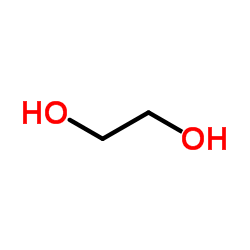
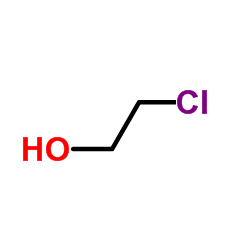

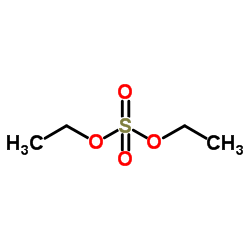
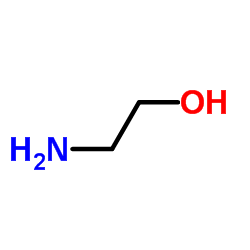
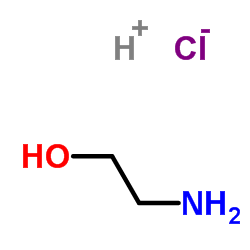

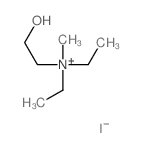
![2-(diethylamino)ethyl N-[2-(2-methoxyethoxy)phenyl]carbamate结构式](https://image.chemsrc.com/caspic/376/108978-03-6.png)

